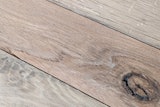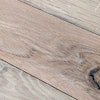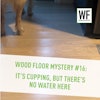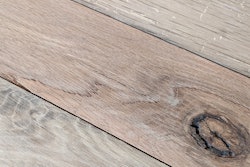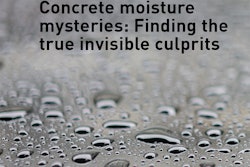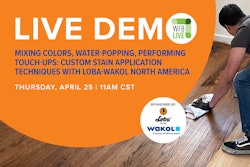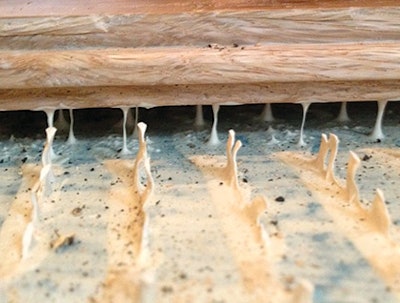
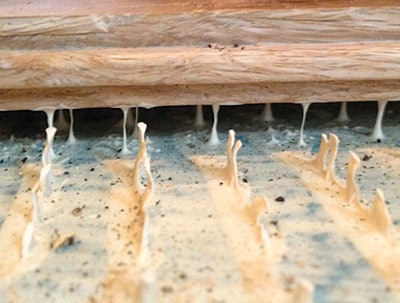
The Problem
Recently, I was called regarding a residential wood flooring installation in South Carolina where the owners had complained about several noises in their plank floor.
The Procedure
The ¾-inch-thick, 5-inch-wide solid white oak floor had been installed in a new home in the coastal area of South Carolina. The newly poured concrete subfloor had been treated with a moisture barrier before the flooring was glued to the slab. Not long after installation, the homeowners noticed noises in several spots in the floor when they walked across those boards.
The Cause
In addition to the noises, there was visible cupping throughout the floor, which prompted the physical removal of the floor covering and further inspection of the area. Cupping usually indicates that moisture and/or humidity had an influence on the wood. The moisture barrier installed was intact, was installed correctly and showed no signs of failure, so the moisture was likely atmospheric.
Although the cupping added insult to injury, the noises were caused by hollow spots where there was deflection in the concrete subfloor. When a wood plank was removed in the vicinity of the noises, one could see that the adhesive had formed stalagmite-like elongations between the wood and the subfloor. This created an easily and visually identifiable hollow spot. Throughout the subfloor the variations measured from 3/16 to ¼ inch in 6 feet. Since the subfloor was not flat when the wood was pressed into the adhesive, the wood flooring stretched the adhesive as the plank relaxed to its natural, flat state.
Hollow spots, by themselves, have a simple and avoidable cause: uneven subfloors.
Hollow spots, by themselves, have a simple and avoidable cause: uneven subfloors. Though many wood flooring adhesives are flexible and can withstand natural wood floor movement on an acceptable subfloor, excessive unevenness of a subfloor causes poor adhesion or adhesive transfer, allowing hollow spots to develop immediately after wood flooring installation.
How to Fix the Floor
In small, isolated areas, hollow spots can usually be repaired discreetly with a hollow spot repair kit. Since most are injection-based, they do not require wood flooring removal. However, if the hollow spots are widespread and cannot be effectively treated with a hollow spot repair kit, the floor has to be removed and the subfloor flattened prior to reinstallation. This can be done with a cementitious patch or a self-leveling underlayment. In this flooring installation, it was recommended that the floor be removed and the subfloor flattened prior to reinstalling and refinishing the wood floor.
In the Future
Although industry awareness is increasing, hollow spots continue to be the most common installation problem when wood flooring is glued down. Ensuring subfloors are within flatness tolerances should be a standard practice of all wood flooring installers. Nearly all adhesive and wood flooring manufacturers have specific language in their guidelines regarding subfloor flatness, as does the NWFA. Though fixing a subfloor to be within tolerances may add additional costs and time, the cost of repairing a subfloor and reinstalling wood flooring after a problem far exceeds this initial investment. It’s in the best interest of everyone involved to ensure that subfloor flatness is checked prior to installing flooring, especially in the case of inflexible materials that are more susceptible to hollow spots.










